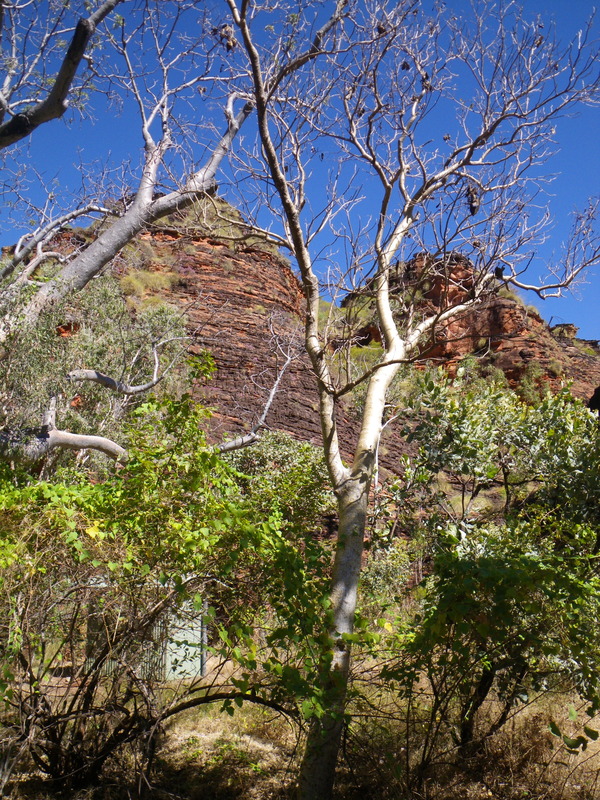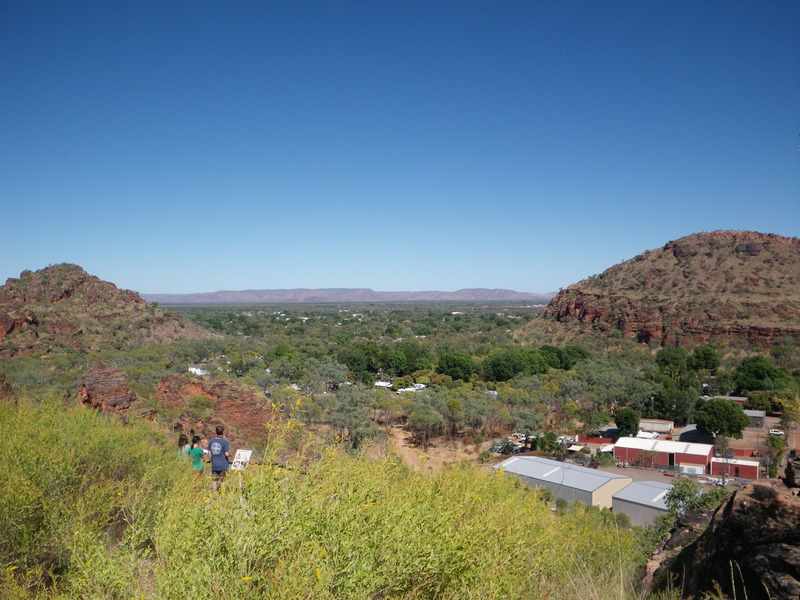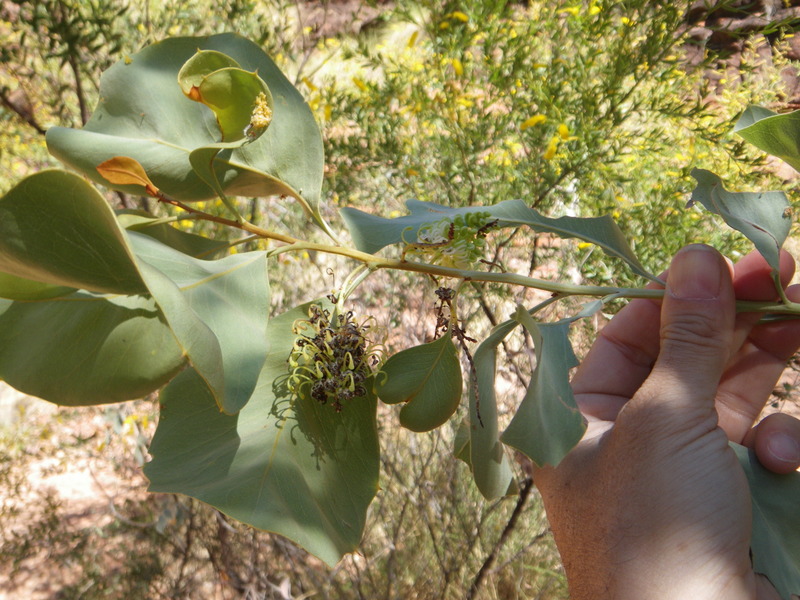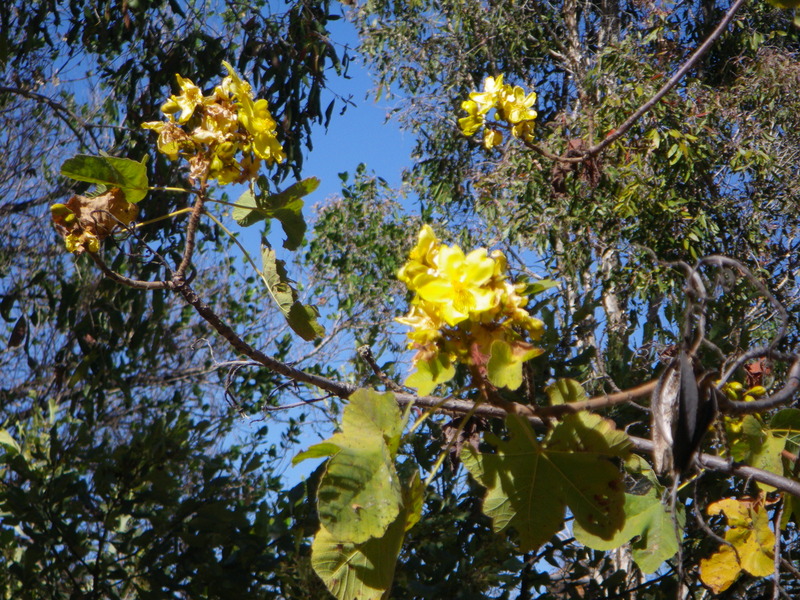
Kununurra has a number of attractions, including some artificial lakes. I briefly visited one of them, but I didn't go at dawn, which is supposed to be the best time to see birds, or at night, which is supposed to be the best time to find crocodiles, so I didn't find much to see.
Instead, I went to Mirima national park, a very small national park less than 3km from downtown Kununurra. The entrance to the park is not free, but there is nobody to collect the fee. Instead, the fee can be paid in an "honesty box". This seemed like a nice idea until I realized it is a tax on honest people, which seems like a not very good idea.
The road to the park goes up a little valley between steep little sandstone hills. At the end of the road is a nice boab.


This park, although very small and accessible, has the same kind of beehive, somewhat striped hills as the more famous, less accessible, and huge Purnululu national park.







Because it is near the city, the park also has some views of parts of Kununurra.


One of the things I enjoyed about the park was going on the short hikes. And one of the benefits of the hikes was the many plants and flowers I saw. This is called a wild mango or Daloong (Buchamania obovata).


This is a blue Grevillea or Dilyberreng (Grevillea agrifolia).


This is a wattle or Wirriling (Acacia richardsii).

There were also many, many flowers. Perhaps I was just lucky with the season.





On my way out of town I picked up a French couple who were hitch-hiking to Darwin. They have spent about 6 months in Australia, working casual jobs. Australia seems to be very welcoming of such people. So far I think I have met lots of people from Holland, quite a few from France, Germany, Japan, and Korea, and one each from Canada and the U.S. Many of them work in the hospitality or visitor industry or in agriculture. I think Australia has special rules allowing visitors under 30 to work. And according to the french couple, if you work less than 6 months, you get back your taxes when you leave -- a good incentive to stay for a limited time, especially if your government at home does not tax your foreign income.
Kununurra is close to the border between West Australia and the Northern Territory.

At the border, there is an agricultural inspection station, because it is not permitted to bring fruits, vegetables, or nuts across the border, to prevent the spread of agricultural pests. I asked the french couple to leave all their fruits and vegetables in Kununurra (they were unaware of the requirement). But at the border, they were only checking cars entering West Australia, not the cars entering the Northern Territory.
Shortly after the border is Keep River National park. The road was quite rough, so we did not go very far. But we did manage to see a strange aboriginal construction.


The sign at the beginning of the trail encourages people to try to guess what this might have been for. And indeed, it is hard to guess.
The sign at the construction itself gives the answer.

The mountains between Kununurra and Katherine looked a lot like the mountains before Kununurra, with some nice sandstone cliffs.




The highway is no longer the Great Northern Highway, instead, it is the Victoria Highway, named after the Victoria river, which I believed was named after Victoria Bonaparte.

We got to Katherine about an hour after dark. Driving during the last hour was tricky, because there were lots of kangaroos by the side of the road, and many crossed the road in front of the car. Through luck and driving slowly and carefully, I managed not to hit any.
For those who are interested, Katherine airfield was also bombed by the Japanese in World War II, on March 22nd, 1942.